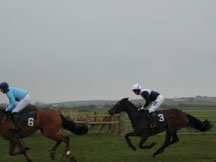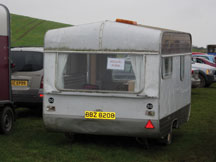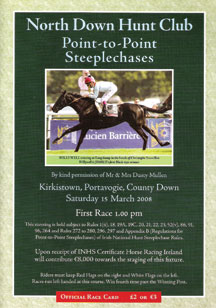Life
Is There A Doctor On The Race Course

When a healthcare temp agency contacted me saying they were looking for a doctor for a horse race my interest was aroused.
|
I have never worked as an emergency doctor on a racetrack let alone witness a horse race before. But when a healthcare temp agency contacted me saying they were looking for a doctor for a horse race my interest was aroused. I have worked in a busy accident and emergency department before and have served as a locum doctor in accident and emergency departments in various hospitals. Being a career orthopaedic surgeon I have considerable experience in dealing with emergency trauma. Nonetheless, I was somewhat apprehensive about working on a racetrack and dealing with the injured jockeys on site. But the organisers reassured me that I would be working on a team with another doctor who had extensive experience in this field. So with a little trepidation, but full of enthusiasm, I accepted the offer.
I had a lengthy chat with the doctor who used to regularly cover at the event. He gave me a detailed view of what to expect. Next I spoke to the organizer for a briefing. I tried to refresh my memory of dealing with head injuries by reading the Oxford Emergency Medicine manual. The race was conducted in a relatively remote place called Kirkistown, County Down, in Northern Ireland. Having been in Northern Ireland for only eight months, my knowledge of local routes was minimal. As the day approached, I was more apprehensive about getting there on time than the event itself. Although I have a navigation system in my car, it cannot be relied upon on local routes. So I downloaded a map and directions from google maps two days before the event and attempted to memorize the route. I also informed my medical insurance company about the event. I was fully prepared for the event, or at least so I thought. The weather forecast on the day of the event called for rain with winds. For good measure I packed my winter clothes and waterproof Wellington boots as well. Miraculously I did not lose my way and I reached there in good time. I was introduced to my colleague for the day, Jennifer, a veteran of these events. She also told me that horse racing runs in her family. The racing event itself is called Point to Point Steeplechase for amateur horses and attracts jockeys from all over Great Britain and Ireland. The event comprised of six races with each race having 4 to 19 jockeys. The medical team consisted of two doctors, Jennifer and I, three ambulances fully equipped with emergency equipment and paramedical staff. One of the ambulances was a field ambulance stationed at the center of the racetrack while the other two waited off the field. There was also a medical cabin where the injured jockeys are supposed to come after a fall for check up, but it turned out up that we kept chasing them after each race to make sure they were fit. Our duties as emergency doctors were to provide first aid to any injured jockeys, assess their fitness to race and if the injury was serious, then to refer them to the hospital. Between the two of us we took turns inside the field ambulance and manning the medical cabin.
For the first race I volunteered to go with the field ambulance and as it was my first time on a race course it was quite a spectacle to watch the horses gallop around and jump over the fences only a few metres away from me. Most of the falls occur at the fences and there were four fences in the mile long racetrack, which the participants go around three times. Sitting in the back of the ambulance along with one of the paramedic I was keeping an eye on the last two fences while the first two fences were watched by the staff at the front of the ambulance. I was told that if a jockey gets up after his fall within seconds then we carry on our vigil for the rest of the race, but if there is any doubt then the ambulance rushes to the scene of the fall to retrieve the injured jockey and take him to the medical cabin. It was a tense watching all the horses lining up for the start of the first race. The horses cleared the first three fences without any falls. At the fourth fence, there was a fall, and the jockey did not get up immediately. He rose soon, but as he walked toward the ambulance I could see that he was bleeding from his nose. My first patient for the day. He only had minor nosebleed and was adjudged fit to race; he actually went on to win the third race of the day.
I was realizing the contrast of working on the field compared to the safety net of the hospital. By the third race I was getting used to the atmosphere and in fact enjoying the adrenaline rush. In between the races the organisers made sure that I was well fed with warm soup and home made sandwiches. The fifth race was the biggest race of the evening with 19 participants. It was my turn again in the field ambulance, but I was more excited than tense by this time. Two jockeys fell at the third fence, but got up immediately. There were two more falls during the race, but the jockeys sustained only minor injuries. The time seemed to flow and even before I realized it, the last race was over. All in all, the whole event turned out to be quite an enjoyable experience. I definitely learned something after seeing the falls of the jockeys and horses at close range. I realized just how easy it is for them to incur serious injuries and how important it is have medical help close at hand. The next time I see an injured jockey in a hospital I can see myself visualizing the whole event and how the injury might have occurred. Ravikanth Pagoti is an Indian physician working in Ireland. We invite you to share interesting or amusing anecdotes from your professional life with Little India readers. Email: editor@littleindia.com |



